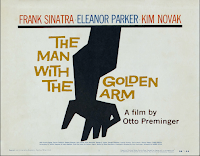Thriller genre
Thriller uses suspense,
tension and excitement as its main elements. Thrillers heavily stimulate the
viewers moods, giving them a high level of anticipation, ultra-heightened
expectation, uncertainty, surprise, anxiety and/or terror. Films of this genre
tend to be adrenaline-rushing, gritty, rousing and fast paced.
A thriller provides the
sudden rush of emotions, excitement, and exhilaration that drive the narrative,
sometimes subtly with peaks and lulls, sometimes at a constant, breakneck pace.
It keeps the audience on “the edge of their seats”.
Thrillers often make use
of literary devices such as red herrings, plot twists and cliffhangers. A
thriller is usually a villain driven plot which presents various problems a
protagonist must overcome.
Psychological thrillers
are fictional thriller storys which enphasizes the psychology of its characters
and their unstable emotional states, with similarities to gothic and detective
fiction in sense of “dissolving sense of reality”, moral ambiguity, and complex
and tortured relationships between obsessive and pathological characters.
Psychological thrillers
often incorporate elements of mystery, drama and horror.
Examples: The Machinist,
House of 9, Straw Dogs, Shutter Island.
Supernatural thrillers
bring in otherworldly elements(such as fantasy and/or supernatural) mixed with
tension, suspense and plot twists. Sometime the protagonist and/or villain have
some form of psychic ability or super powers. Examples: The Dead Zone, Chronicle,
Frequency.
Techno Thrillers are
suspense films in which manipulation of sophisticated technology plays a
prominent part. Examples: Jurassic Park
Spy Thriller: The
protagonist is generally a government agent who must take violent action
against agents of a rival government or (in recent years) terrorists. The sub
genre usually deals with the subject of fictional espionage in a realistic way.
Its is a significant aspect of British cinema.
Examples: The parallax
View, The Tailor of Panama, Taken, Unknown.
Codes and Conventions
Characters: Resourceful
Heroes, Convicts, Soldiers, Spies, Law enforcement, stalkers, men associated
with danger, criminals, assassins, Innocents which are dragged into danger,
Psychos, Prisoners
Themes: Terroism,
Political conspiracy, Psychological mind games, supernatural events, crime,
spies, chase, suspense
Symbolism: Cars, Weapons,
Urban settings, tension building music, fast paced editing, low lighting
Effect on Audience:
Excitement, suspense, anticipation, nerve wrecking tension, anxiety,
uncertainty
Alfred Hitchcock
Alfred Hitchcock was the
most famous thriller director of his time and was said to have helped shape the
modern-day thriller genre. He was said to be considered a master of
manipulating is audiences fear and desires, and taking viewers into a state of
association with facing the reality of the character. He would often include a
taboo or sexually-related theme into his films.
Hitchcock's films often
placed an innocent victim (an average person) into a strange, life-threatening
or terrorising situation, due to mistaken identity, misidentification or
wrongful accusation.
Common Traits of Thriller
Films
-Low Key Lighting
-Shadows
-Obtrusive Editing(Quick
Cuts, Changes in camera angles)
-Tension Music
-Stairs
-Flashbacks
-Black and White
-Freeze Frames
-Slow Motion











